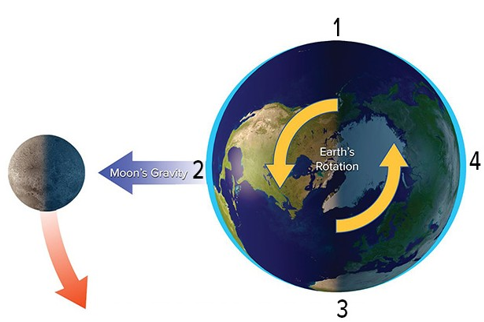How do thermostatic properties maintain global temperatures? Explain heat capacity and latent heat in your answer
· Heat capacity is the amount of energy required to raise one gram of a substance by 1° Celsius. Water has one of the highest heat capacities, seconds only to ammonia.
· Latent heat is the pause in temperature fluctuations when water is changing states. Latent heat of fusion occurs when liquid water becomes ice. The addition of 80 calories per gram is needed for water to become a solid. Latent heat of vaporization happens when water is transitioning to a gas. This state change requires 540 calories per gram. These properties make it easier for water to remain in a liquid state.
· Water's high heat capacity allows it to absorb large amounts of heat from the sun, but only raise a few degrees in temperature. The tendency to resist temperature changes when heat is gained or lost is called thermal inertia.
· These properties of water keep the ocean at a relatively consistent temperature and in a liquid state. This is a big factor in keeping the Earth cool.
You might also like to view...
With the Moon in this position, which area will experience low tide?

A) 1
B) 2
C) 3
D) 1 and 3
E) 2 and 4
The ____________________ is the most heavily armored vertebrate, and it evolved in the Triassic. Fill in the blank(s) with the appropriate word(s)
Which is not true about sustainable development?
A) Sustainable development is development that meets the needs of the present without comprising the ability of future generations to meet their own needs. B) It is promoted when the biodiversity of a particular place or Earth as a whole is protected. C) It includes both conservation and preservation. D) Sustainable development does not consider economic factors. E) Many of the richest nations display the highest per capita pollution levels.
In a particular titration experiment a 25.0 mL sample of an unknown diprotic acid required 30.0 mL of 0.200 M NaOH for the end point to be reached. What is the concentration of the acid?
A) 0.0833 M B) 0.120 M C) 0.167 M D) 0.240 M